| Plant | Comments |
|---|---|
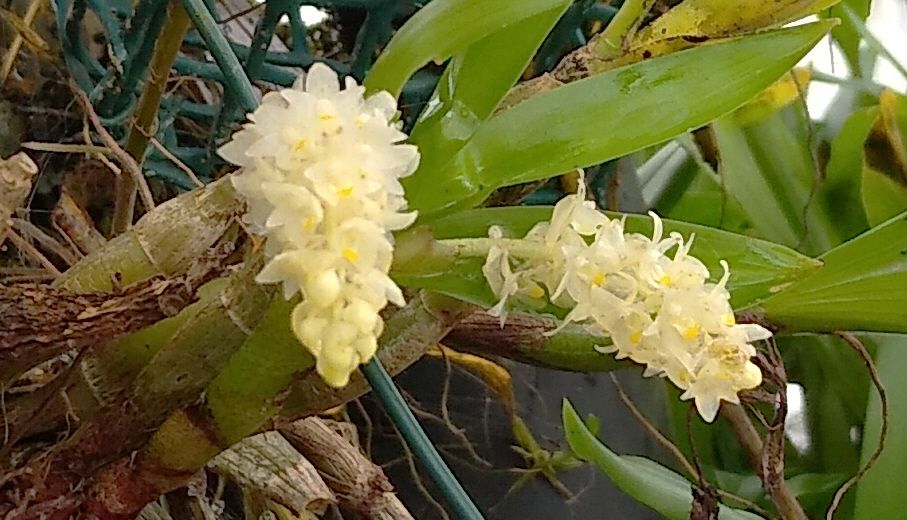 | Eria spicata We have seen this species in Nepal and Assam and it is reported widespread in the lower forests of the Himalaya. The species can have a hint of pink in the white and it is sometimes slightly fragrant, though not this clone. From Iain Wright on 29/08/2020 |
 | Eria spicata It is easy to identify in the wild, even when not in flower, by shape of the pseudobulbs. These are flattened, slightly curved spindles, which tend to nest in linear clumps. Click here to see a typical specimen from the internet. Use the back button to return. From Iain Wright on 29/08/2020 |
 | Cattleya xanthina Floriferous small flowered cattleya, gently fragrant. From Iain Wright on 31/08/2020 |
 | Dendrobium lawsii Papua New Guinea plant likes moisture, can flower any time of year and sometimes on old stems. From Iain Wright on 25/08/2020 |
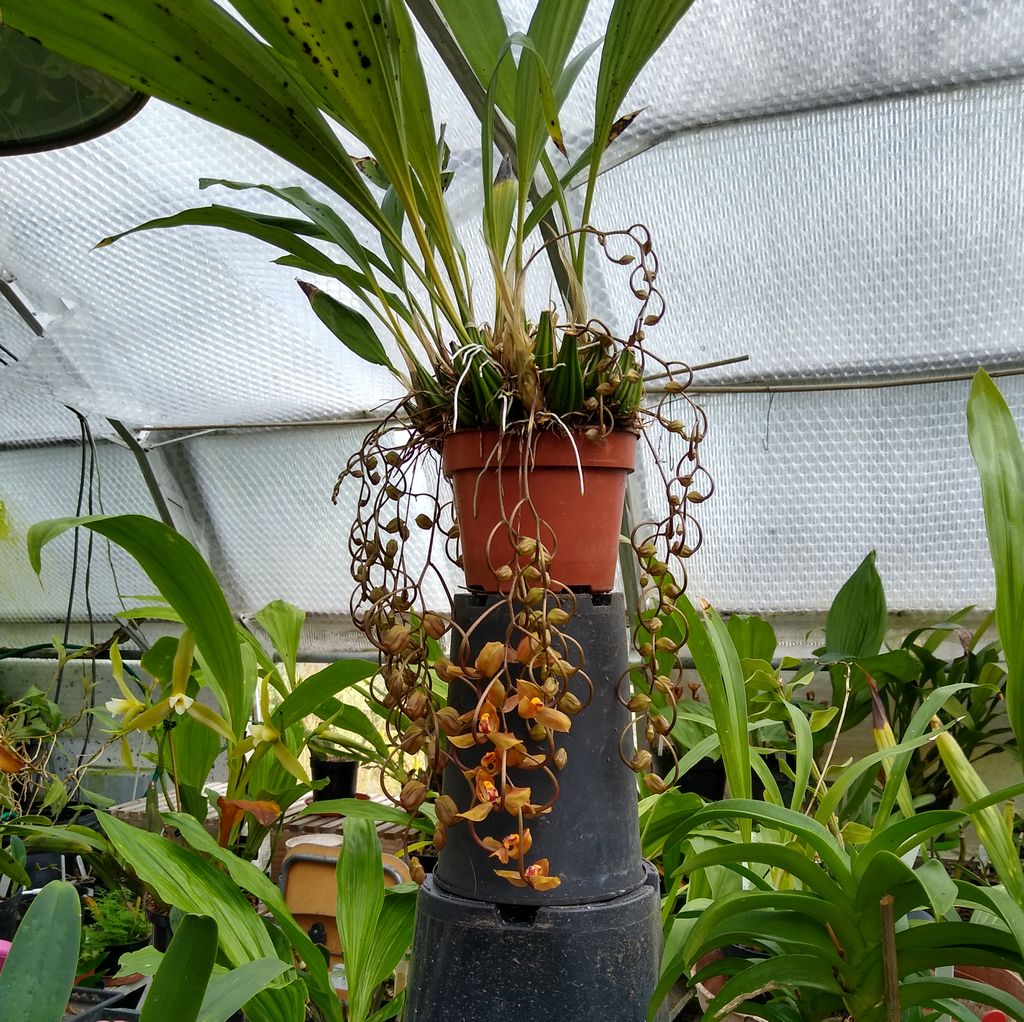 | Gongora galeata Mexican species that can make good specimens. From Iain Wright on 29/08/2020 |
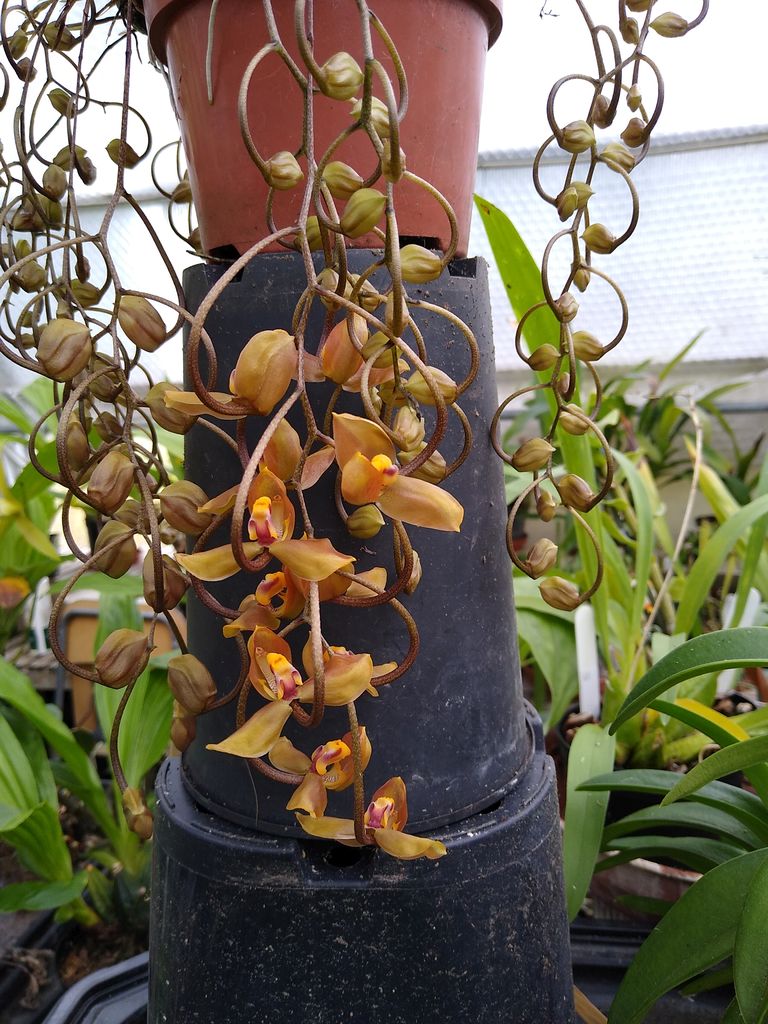 | Gongora galeata I got this plant from Tom Price in April 2014 when he came to talk to us about Cymbidiums. I have not yet repotted it. Note to self: repot into black pot! From Iain Wright on 29/08/2020 |
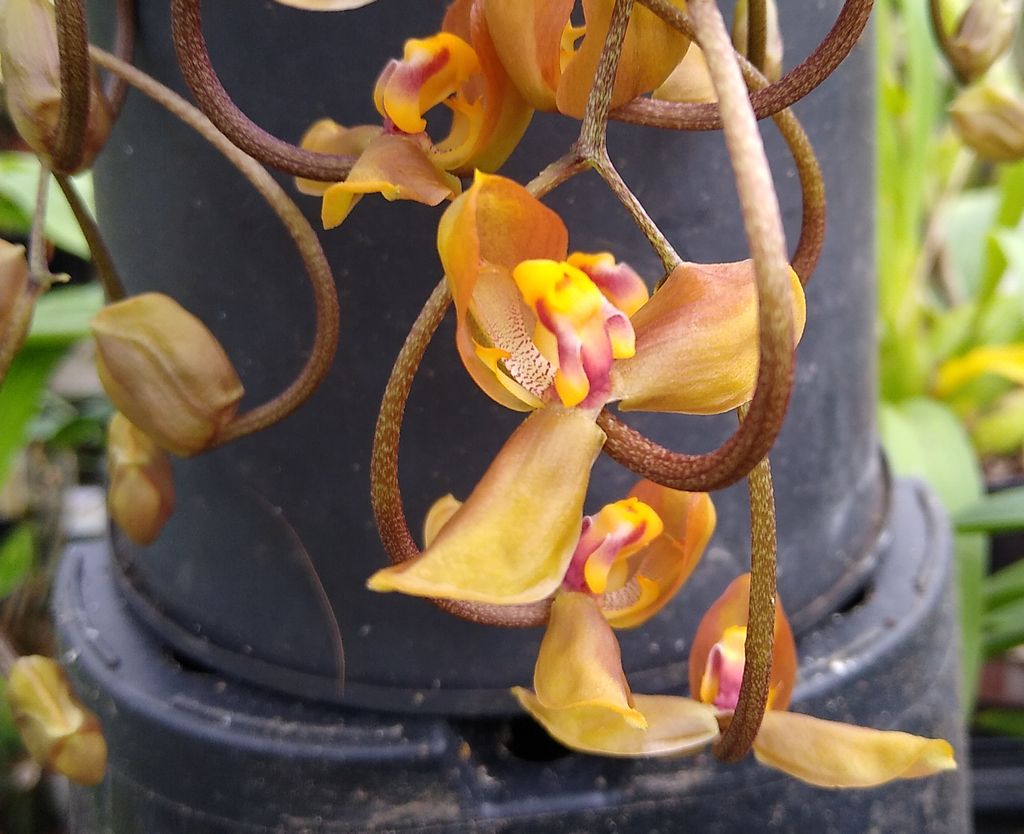 | Gongora galeata These three pictures are from an early stage in the flowering. From Iain Wright on 29/08/2020 |
 | Gongora galeata This picture is about a fortnight later with the plant in full flower. From Iain Wright on 09/10/2020 |
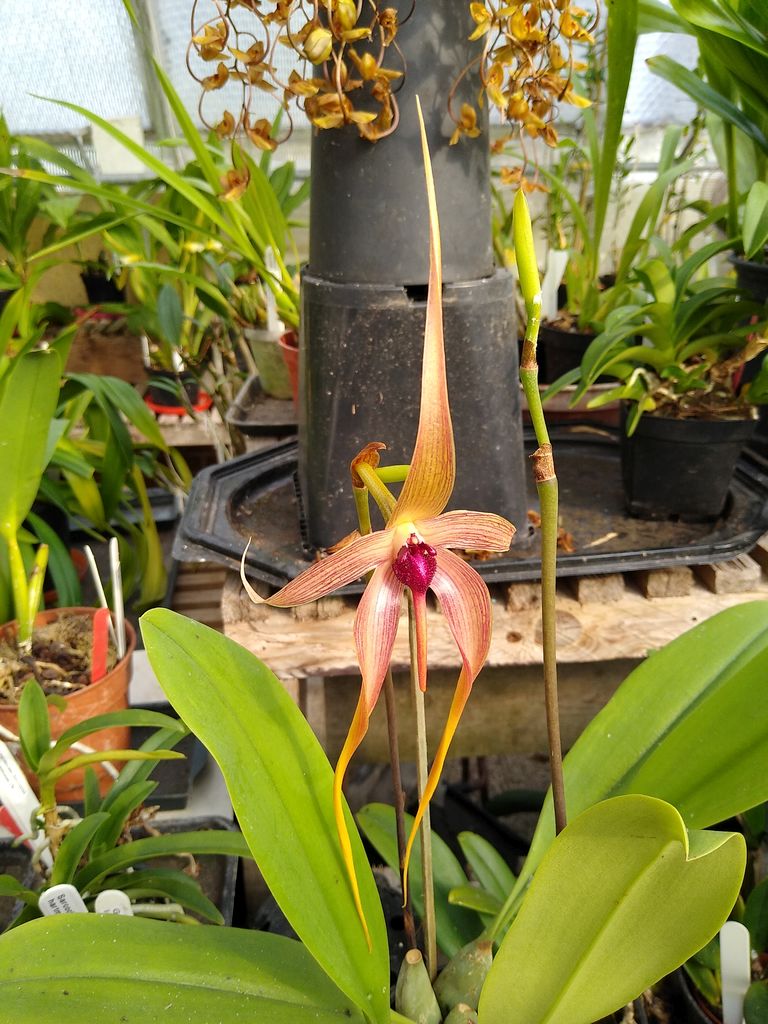 | bulbophyllum echinolabium Fortunately , this clone has no odour unlike many of the bulbophylum species which try to attract carrion flies as pollinators. I did not measure the height of the flower but it is of the order of 20cm (8 inches). From Iain Wright on 09/10/2020 |
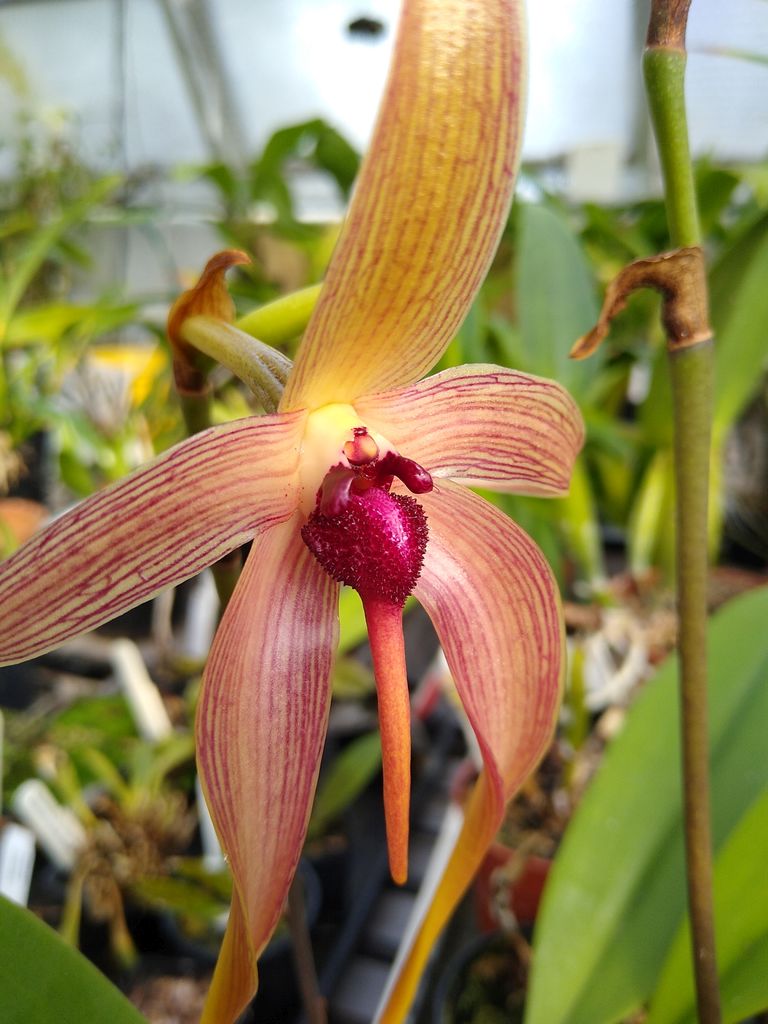 | bulbophyllum echinolabium Echinolabium translates to 'prickly lip', quite appropriate to this flower. As in many bulbophyllum species, the lip is hinged - though I have not tested this yet. I have the opportunity as it puts up a number of flowers from each stem - but only one at a time. From Iain Wright on 09/10/2020 |
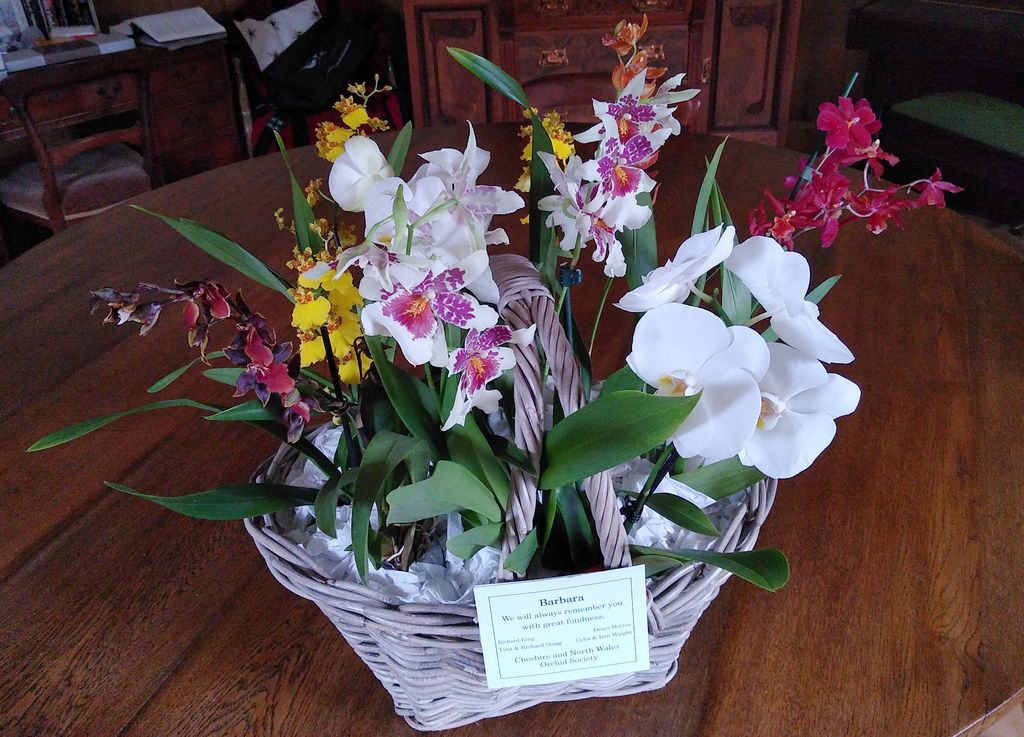 | Barbara's Orchids Although Celia and I decided not to attend Barbara Kitchen's funeral, we took this basket of orchids to the undertakers on behalf of the CANWOS members who joined with us to provide this floral tribute. These were not cut flowers but whole plants. The family hope to grow some of them on in Barbara's memory. From Iain Wright on 05/10/2020 |
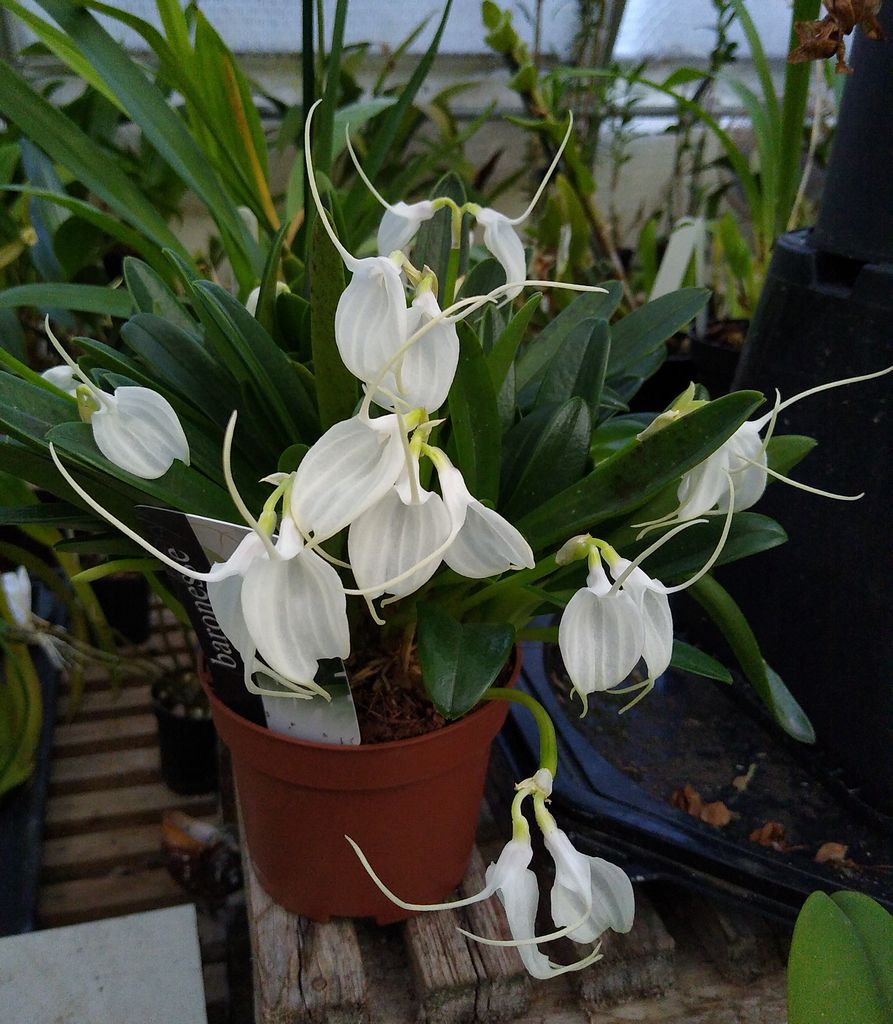 | Masdevallia tovaresis As both Birkenhead and Wrexham were under partial lockdown, on the way home we stopped at Grosvenor Garden Centre for a cup of coffee in their properly distanced cafe. Walking in past the plants for sale, this caught my eye and as we walked out, it came with us. Whilst it was not a cheap buy at £25, it seems good value. The 5 inch pot is full of leaves with lots of flowers and buds. I am resolutely not thinking of dividing it into four which it would do easily. This is a white species, not an alba form and as you can see, the flowering stems can carry multiple flowers. ps There were several still left for sale. From Iain Wright on 08/10/2020 |
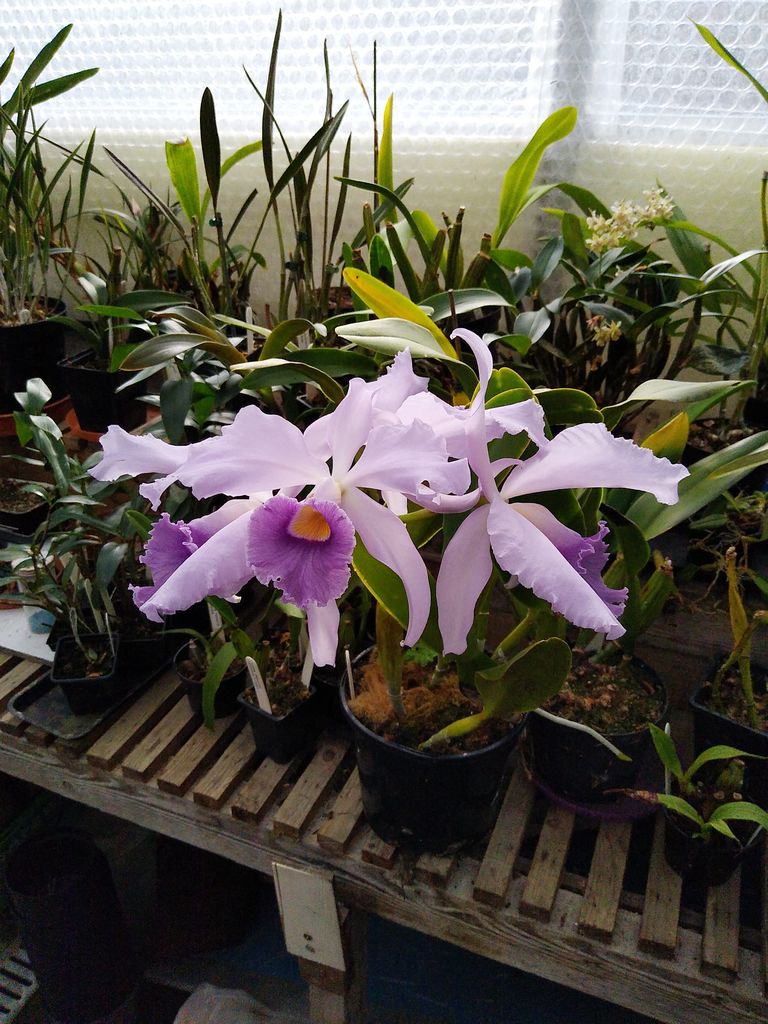 | Cattleya Bella Although I tried to identify this when I bought it at the BOC Congress at Writhlington School in 2017, I could not find a reference to it anywhere and assumed it was a coerulea form of one of the big cattleyas. I tried again to day and - Lo and Behold - it is listed as a hybrid Cattleya labiata x Cattleya purpurata. It was first made in 1884 by Veitch and as the pollen parent was a Laelia in those days, it would have been a Laeliocattleya. Whatever you wish to call it, it is a large handsome plant! From Iain Wright on 08/10/2020 |
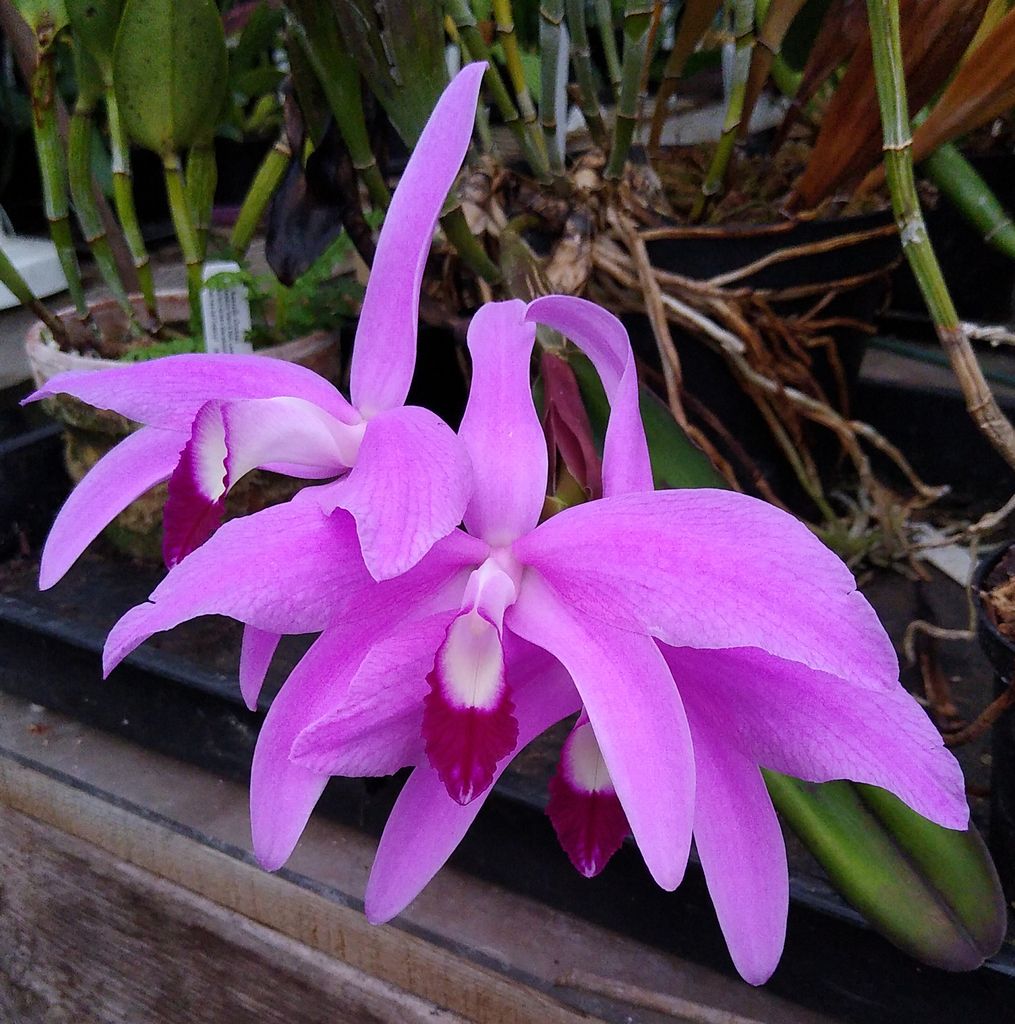 | Cattleya perciviliana Now this is definitely a species. At least that is what I thought when I started writing this but as I compare this plant with internet pictures, I start to have doubts. In particular, the shape of the lip does not look right for a member of section Cattleya of genus Cattleya. There is not enough tissue on the front edge of the lip, making it much less frilly than most other section members. Also the lip fall away forward whereas other section members tend to rise upwards at the tip, giving a vaguely cow horn shape. Click here to see a typical specimen from the internet. Use the back button to return. I speculate that it is a brassocattleya backcrossed onto a cattleya, perhaps more than once. If anyone has an opinion on this, I would be pleased to hear it. From Iain Wright on 08/10/2020 |
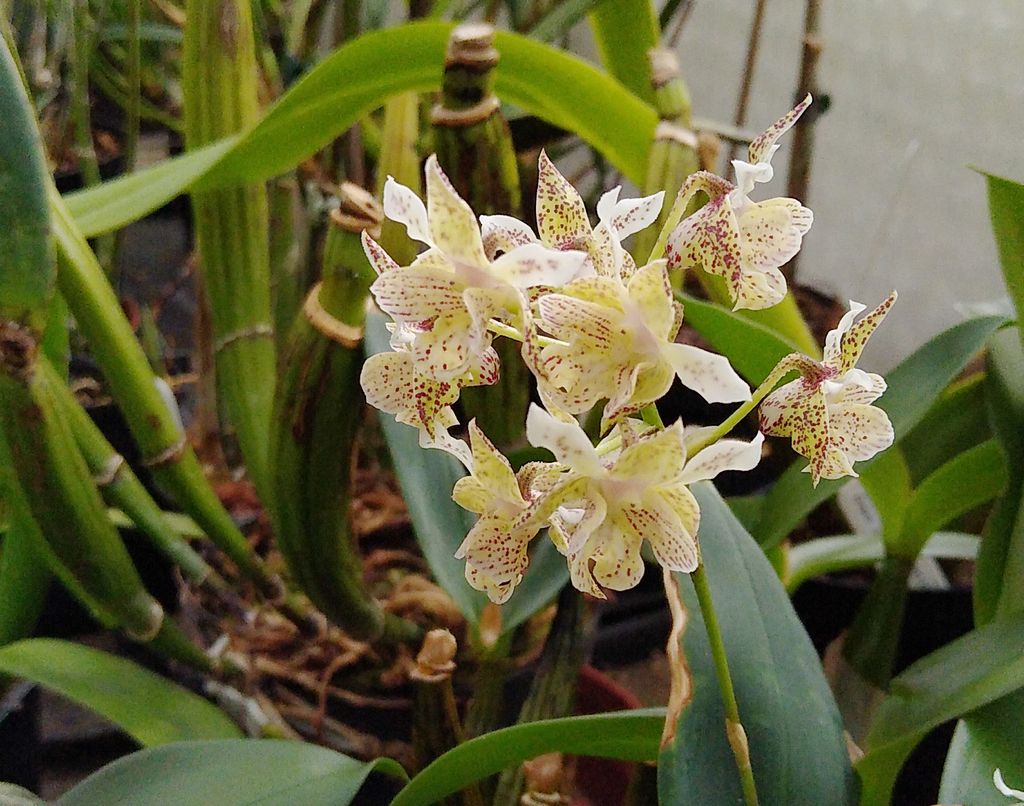 | Dendrobium Lutin Blanc This came from the Malvern Show in June 2015. It is a primary hybrid, D. aberrans x polysema. It is a good grower and will repeat flower on old stems. From Iain Wright on 08/10/2020 |
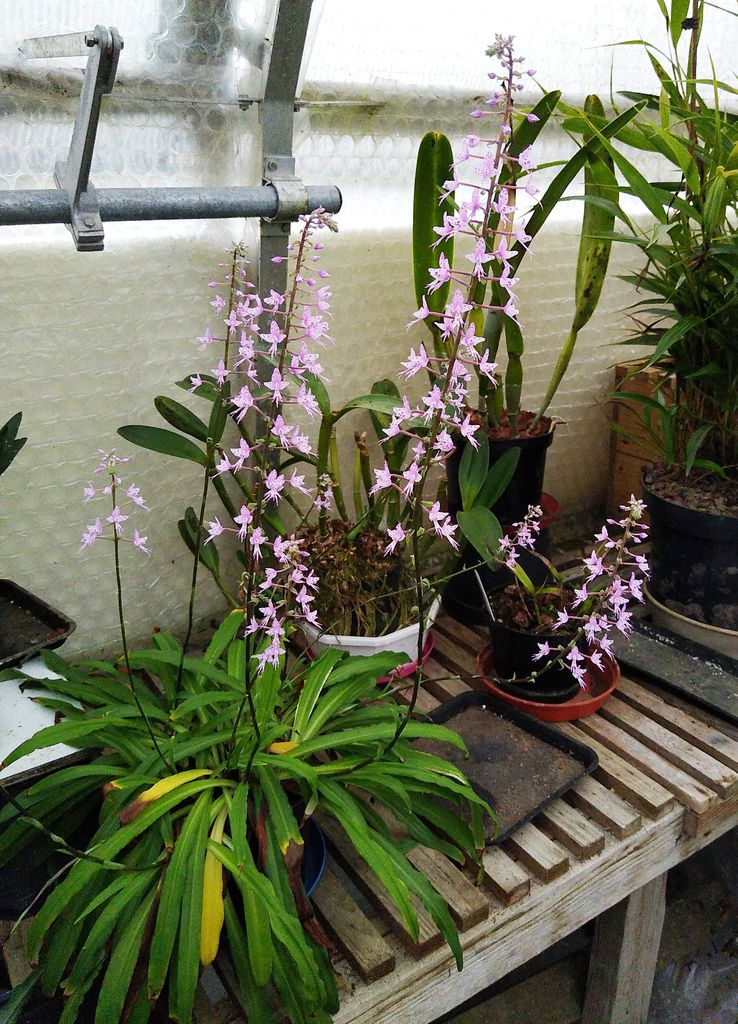 | Stenoglottis longifolia Only eight spikes (1 off screen to left) on this South African terrestial, it probably needs a repot. It is not the easiest orchid to repot as it has thick underground tubers/rhizomes which can break quite easily. But then again, the broken tubers will often grow on into new plants. From Iain Wright on 08/10/2020 |
 | Stenoglottis longifolia The flowers are small but there are lots of them. Although I grow it intermediate, it comes from heights of up to 1300 meters and should be ok at 10C or even less. It needs good light, free draining compost, lots of water whilst growing and much less after leaf fall. From Iain Wright on 08/10/2020 |
 | Coelogyne fulginosa Or should it be? "Dutch researcher, Dr Barbara Gravendeel, in her PhD thesis recommended that many of the separate species in this group, including Coelogynes fimbriata, fuliginosa, ovalis, padangensis, and pallens should all be reduced to one species name, Coelogyne fimbriata." This bit is now on a piece of tree branch under the sprayer and growing away strongly. I recovered it from the top of the thick polyurethane insulation by the doorway, where it had fallen when it broke off another bigger plant. The root had just about penetrated the polyurethane after 3 years. Who said propagation is difficult? From Iain Wright on 08/10/2020 |